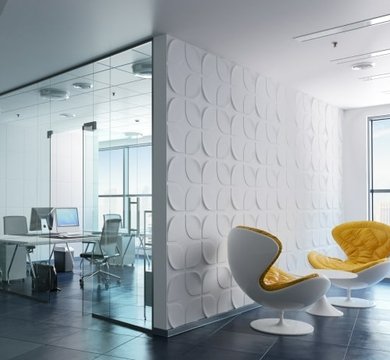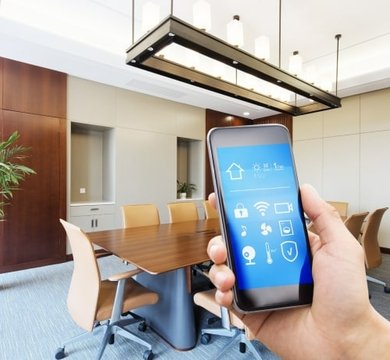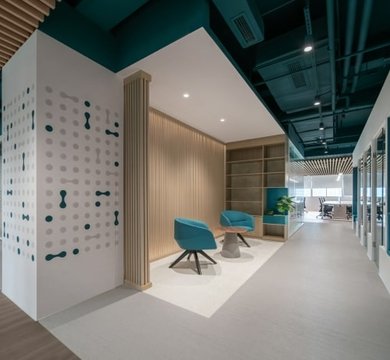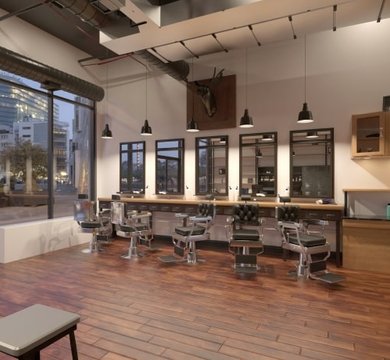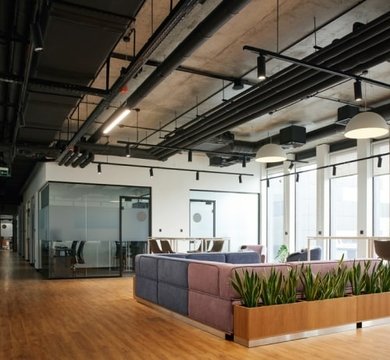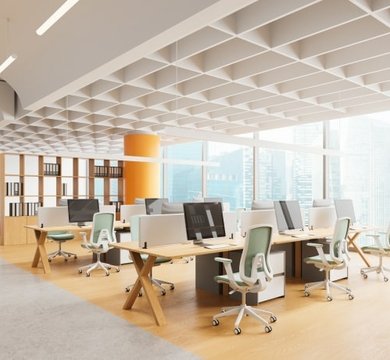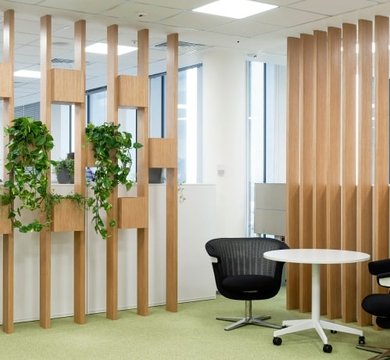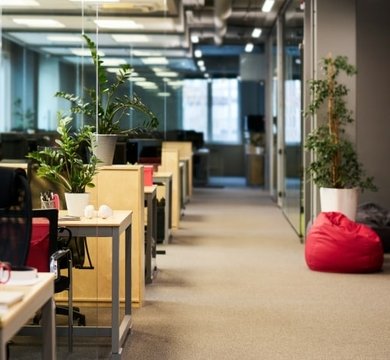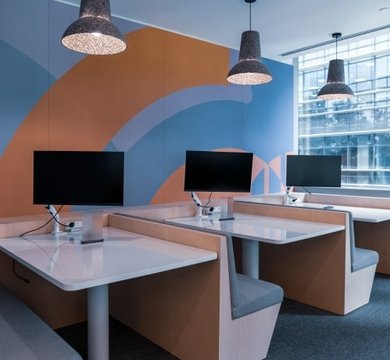Stand more, sit less at work. Although it's a fairly new way of thinking in commercial design, it is proven to increase productivity and keep employees healthy.
Studies from the British Heart Foundation of 2,000 UK office workers found that 37% of men and 43% of women spend less than 30 minutes a day on their feet in an office. In all, 78% of office workers felt they spent too much time sat down, which can lead to sluggishness, reduced alertness and a decrease in motivation. To counter this, commercial fitouts are now designed to get people out of their office chairs.

Stand and deliver
Denmark took the lead in this area by making it mandatory for employers to offer staff sit-stand workstations. Now the UK is catching up and there are even annual ‘on your feet’ days, when people will be encouraged to sit less and move more.
Watch how staff move around the office
Incorporating sit-stand workstations into your office design works best with some forward planning. It's good to observe how people work and move around the office to assess whether they could benefit from a sit-stand desk. For instance, those who have laptops are more inclined to be on the move and adopt sit stand.
Want to work out the cost of an interior design project?
Our refurbishment cost calculator allows you to generate a guide figure in seconds.
Hybrid desks offer the best of both worlds
Employers don't have to make a total switch to sit-stand, as a new breed of office desks allow employees to quickly swap between sitting and standing to suit their mood, task or even state of health. Height-adjustable desks offer optimum comfort for employees and an office refurbishment is the ideal time to replace outdated, fixed desks. It’s also possible to introduce standing meeting tables and break-out areas to your office, which encourage people to get up from their office chairs.
In fact, Stanford Business School held a study with 56 work teams who had stand-up meetings vs. 55 groups holding seated meetings. In all cases, the meetings were short—roughly 10 to 20 minutes. In the stand-up meetings, groups took 34% less time making decisions, with no real difference in the quality of the decision.
Consider one of the 4 main desk types:-
- Electric sit-stand desks are the most popular solution - easy to use and some even measure your sitting time and provide computer prompts to change position.
- Counterbalance desks adjust by releasing and locking a lever to alter height. They require moderate force to push down and can easily be raised upwards.
- Winding Handle sit-stand desks use a cog and wheel system to elevate.
- Hybrid desks combining both counterbalance and winding handle functionality are a recent development and offer good flexibility.
Further reading
And if you need any more convincing, you may like to read some further research that supports the sit-stand revolution:-
- Public Health England (PHE) says staff should use sit-stand desks to ensure they are on their feet for a minimum of two hours a day.
- It’s been found that, compared with those who sit the least, those who sit most are more than twice as likely to develop type 2 diabetes and cardiovascular disease. They also have a 13% and 17% increased risk of cancer incidence and mortality, respectively.
- According to Diabetes Care, in order to best mimic the natural human physical activity rhythm, people should alternate between 20 minutes of sitting and standing, with a 15-minute break every two hours.


